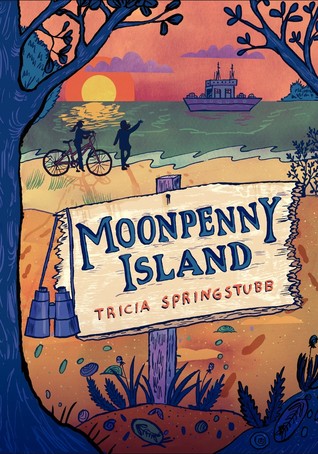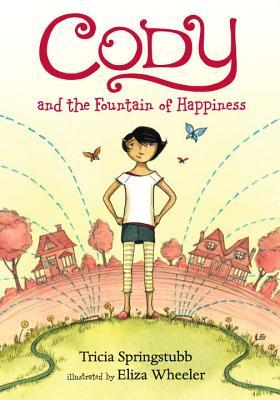 Tricia Springstubb is the author of five books for young readers — “What Happened on Fox Street,” “Mo Wren, Lost and Found,” “Phoebe and Digger,” “Moonpenny Island” and “Cody and the Fountain of Happiness.” The following is a complete transcript of her interview with Cracking the Cover.
Tricia Springstubb is the author of five books for young readers — “What Happened on Fox Street,” “Mo Wren, Lost and Found,” “Phoebe and Digger,” “Moonpenny Island” and “Cody and the Fountain of Happiness.” The following is a complete transcript of her interview with Cracking the Cover.
Why do you write?
I write because I’m greedy! One life isn’t enough for me. I want to walk in lots of different shoes, see through many other eyes.
Why specifically do you write for young people?
I actually write fiction, essays and reviews for adults as well, but most of my work is for young readers. Writing for them, I get to wear my heart on my sleeve. I know they will fully enter the world I create, their own hearts wide open. No one cares about stories more deeply than kids do.
“Cody” and “Moonpenny” are quite different. Where do your ideas come from and how do they take shape?
Maybe for me the better question is, Why do some ideas become stories, but not others? Jane Yolen once explained this with the wonderful metaphor of an egg hatching. The mother hen (the idea that sparks the story) is outside, and the chick (the emotions that idea arouses or evokes for the writer) is inside. The two tap-tap-tap away, pecking their way toward each other. When hen and chick meet, the shell falls away and the story begins.
 It’s unusual to have two books come out at once and from different publishers, how did that come about?
It’s unusual to have two books come out at once and from different publishers, how did that come about?
I’m very lucky to work with two such wonderful publishers. When my agent shopped around my novel What Happened on Fox Street, both HarperCollins and Candlewick bid on it. Ultimately, HC published it, but a couple of years later, I sold my picture book Phoebe and Digger to Candlewick. The way things have worked out, HC has published my books for older readers and Candlewick for younger. As I said, I still pinch myself over how lucky that makes me.
Cody and Flor both have strong personalities. How did they develop?
Flor, the main character in Moonpenny Island, was originally a boy with the unfortunate name Larry Walnut. I can’t tell you how many times I revised that book—it was the hardest bit of writing I ever did. Pretty much the only thing that stayed the same was the setting, which always drove the action. I can’t remember the exact moment Larry became Flor, but as soon as it happened, I found the book’s true voice. Larry, by the way, loved his bike as much as Flor does.
Cody, on the other hand, was always Cody. She is one of those characters who arrive fully-formed, ready to roll. I regard her as the optimistic side of me, times 100.
I do think of the two girls as related. Cody could almost be Flor’s little sister. They’re both big-hearted, curious girls brimming with questions and opinions and dreams.
In addition to coming of age elements, the plots of both books deal with real-life circumstances — A friend moving away and separated parents in “Moonpenny”; and parents who work full time/are away a lot in “Cody.” Why is it important to include these aspects in books for young readers?
When I was young, what I most wanted from reading was to recognize myself. Of course we can see ourselves (or the people we long to be) in fantasy or adventure stories, but I prefer writing about situations that can really occur. I guess we write the books we want to read.
 Do you include traits of people you know in your characters or are they strictly from your imagination?
Do you include traits of people you know in your characters or are they strictly from your imagination?
Every character (good or bad) has a bit of me (good or bad) inside. Beyond that, I shamelessly borrow habits, gestures, tics, clothing styles, etc. from friends, family and strangers alike.
Why do you think young people are attracted to your books?
I hope kids like my books because they’re good stories, the kind that make them turn the page dying to know what happens to the characters! I also hope my books make kids laugh (and sometimes cry). I want to write books that readers think about afterwards, and that change the way they see themselves and their world.
What are you working on now?
Right now I’m working on revising a new middle grade novel that’s different from anything I’ve done before. It’s about a shooting, and its repercussions for a family and a close-knit neighborhood. It’s also about the nature of goodness, time, and language, things so hard to pin down.
It’s a challenging book to write, and when I finish it I’ll be glad to turn to writing the fourth book in the very happy, sunny Cody series!
Is there a book from your own childhood that still resonates with you today?
I will always remember reading To Kill a Mockingbird from start to finish in one summer day, lying beneath a tree in my backyard.
